
Many a gardener, both new and seasoned alike, have been surprised by the discovery of hard bumps running up and down the stem of their tomato plants.
You may wonder, what parasite or disease have my tomatoes picked up now? Even more worrying, sometimes these odd protrusions are more pronounced, like tiny worms attached to the stem. What the heck are they, and what do you need to do about them?
Read on to find out about this strange tomato morphology.
Tomatoes are Weird
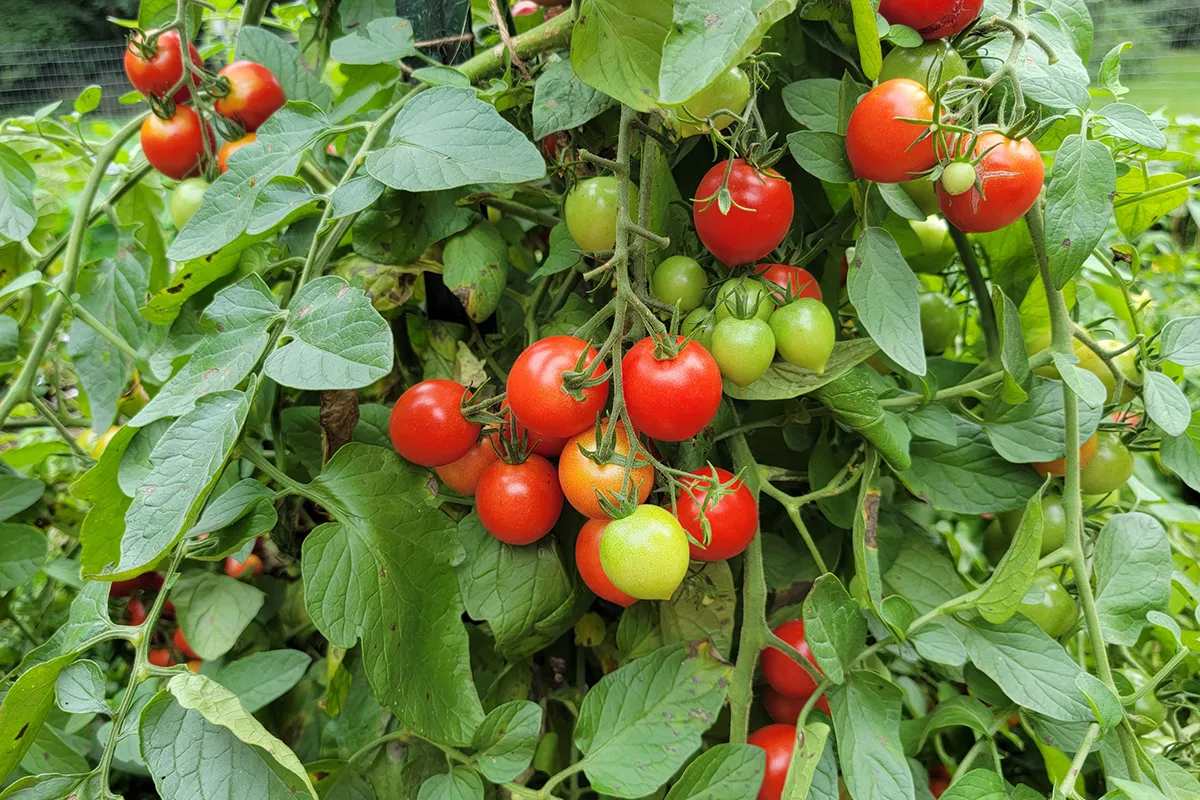
Look, I know we all love growing big, juicy tomatoes each year, but you have to admit, they’re kind of weird. Of the many wild plants we have taken a shine to and cultivated over the millennia, the tomato is at the top of the list for strangeness.
- They come from a family of plants that all contain poisonous alkaloids, but we eat them anyway. (And plenty of other nightshades, too.)
- Before we started cultivating them, they grew as creeping vines in the Andes Mountains with tiny, blueberry-sized fruits. (And still do; for now.)
- If the developing flowers experience stress, you get creepy catfaced tomatoes.
- And to top it all off, now you discover these weird bumpy, worm-like…things…growing on your tomato stems.
Tomatoes are weird.
Adventitious Root Primordia in Tomatoes
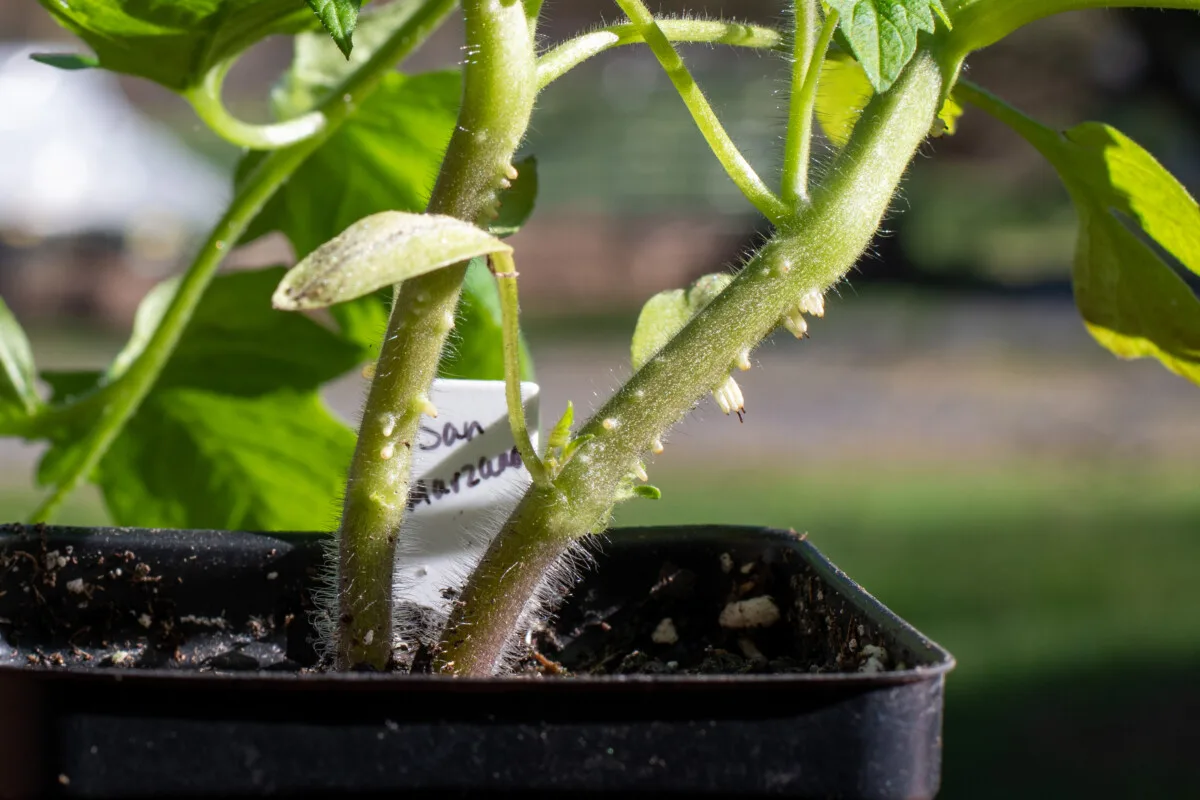
What you see on your tomato stems is called adventitious root primordia. Those little bumps are actually tiny root nodes developing just below the epidermal layer of the stem.
Beneath the surface of the stem, there are special cells called parenchyma cells; these make up parenchymal tissue running the length of the stem.
I’m sorry, Trace. Did you say my tomatoes have paranormal cells?
Parenchyma cells.
Look, I’m a plant nerd, humor me, and you’ll learn something cool about tomatoes.
These guys are like the pit crew for your tomato plant. They’re fully formed, mature cells. But they’re sort of on standby, waiting for the plant to tell them what it needs. Just like a call coming into the pit for a pitstop, when the parenchymal cells receive a cue from a chemical within the plant called auxin, like a pit crew, they spring into action.
Only instead of changing tires, adjusting the suspension, or refueling, the cells begin dividing and growing into whatever cells are needed based on the cues.
For instance, have you ever transplanted a large tomato seedling and then snapped the main stem nearly clean off because you were a little overzealous trying to train it up a string?
Me neither. It was a hypothetical question.
Okay, fine.
Not only did I do it once this spring, but twice. Did I lose the plants? Nope.
The parenchyma cells within the stems sprang into action, dividing to heal, regenerate and graft the stem back together and make new pathways for nutrients, water and sugars to flow again. All within a matter of days.
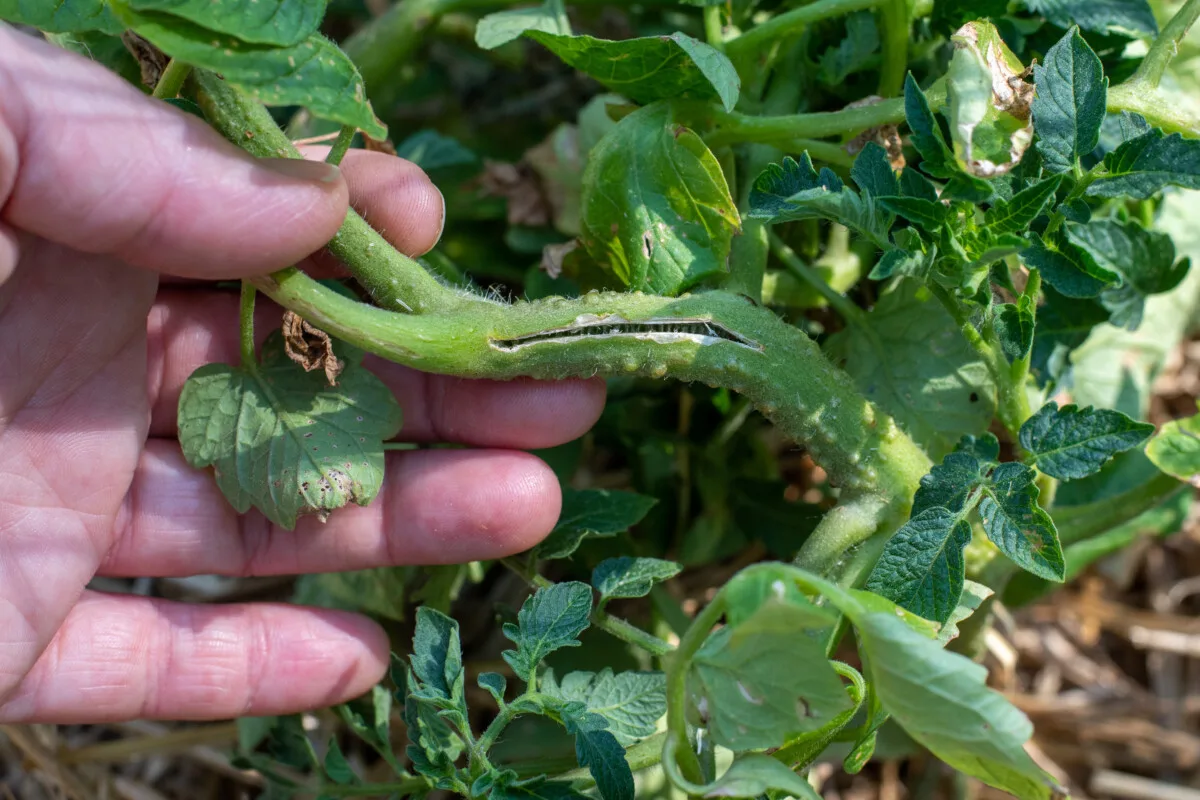
These cells can grow into numerous support systems to meet many of the plant’s needs – photosynthesis, transporting nutrients and water, healing and regrowth, and, you guessed it, roots.
Pretty cool, right?
Those same cells start dividing below the surface, growing into adventitious root primordia. Those little bumps are your tomato plant’s pit crew getting everything ready for the moment the plant signals,
“I’m a little thirsty.”
Adventitious Root Primordia
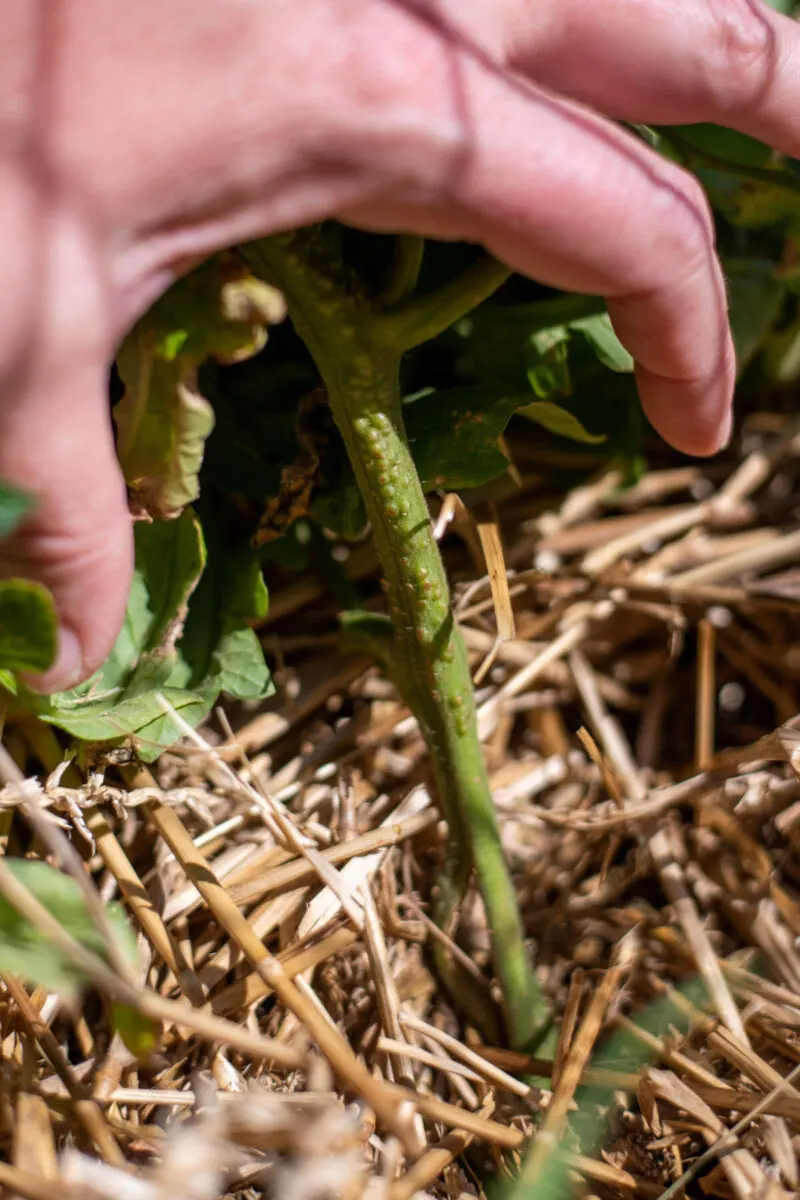
Adventitious root primordia, sometimes called adventitious roots or root primordia, is quite common in tomatoes. In fact, it’s more uncommon to find a tomato without some stage of adventitious root growth along the stem.
As any tomato grower will tell you, tomatoes are thirsty plants.
They need large root systems to grow the large numbers of fruit they produce. In the wild, they grow on the ground as a vine, creating vast root systems by putting down roots anywhere the stem touches the soil.
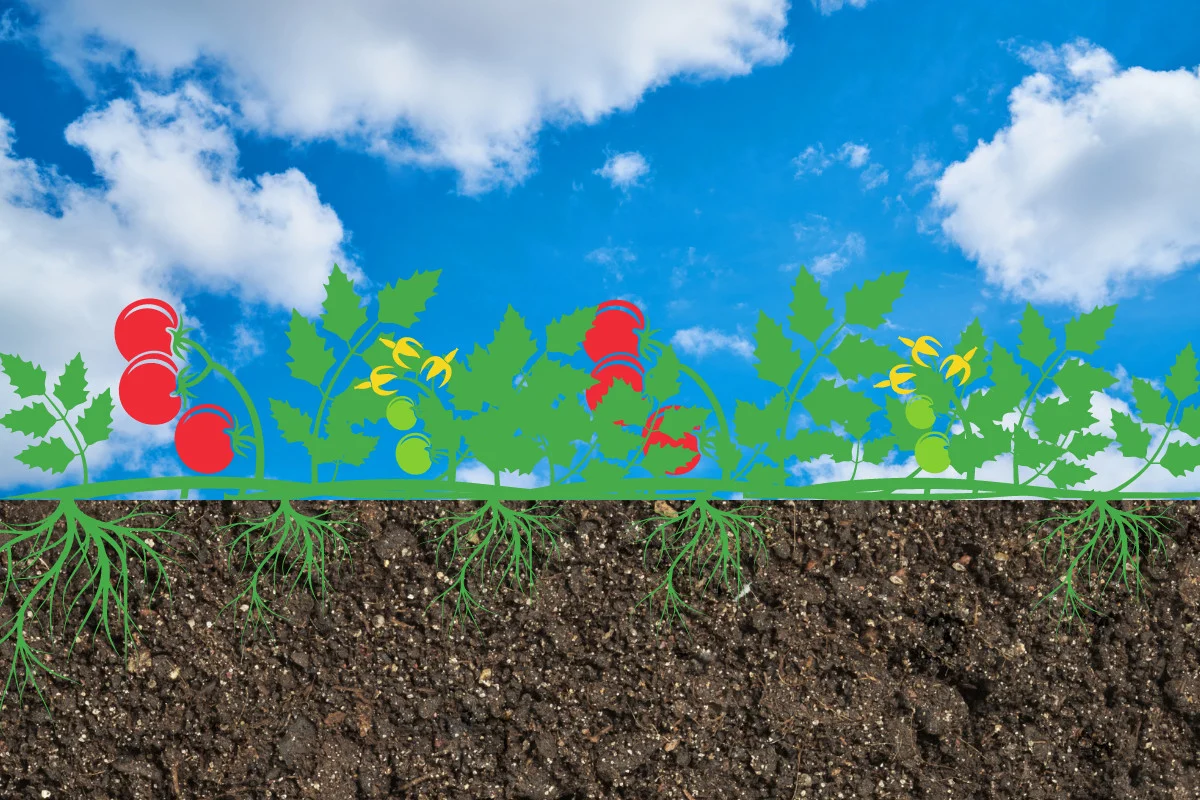
That’s right; tomatoes can grow new roots anywhere along their stems.
We grow cultivated tomatoes off the ground to prevent disease, but they’re still looking for any opportunity to put new roots in the ground.
Most of the time, root primordia along your tomato’s stem are nothing to worry about; it’s a sign of a healthy plant doing what healthy plants do.
Remember, the pit crew is just getting ready. You may even notice adventitious roots growing out of the stem into the soil at the very base of your plant or growing out of the crack in the stem where you broke it this spring.
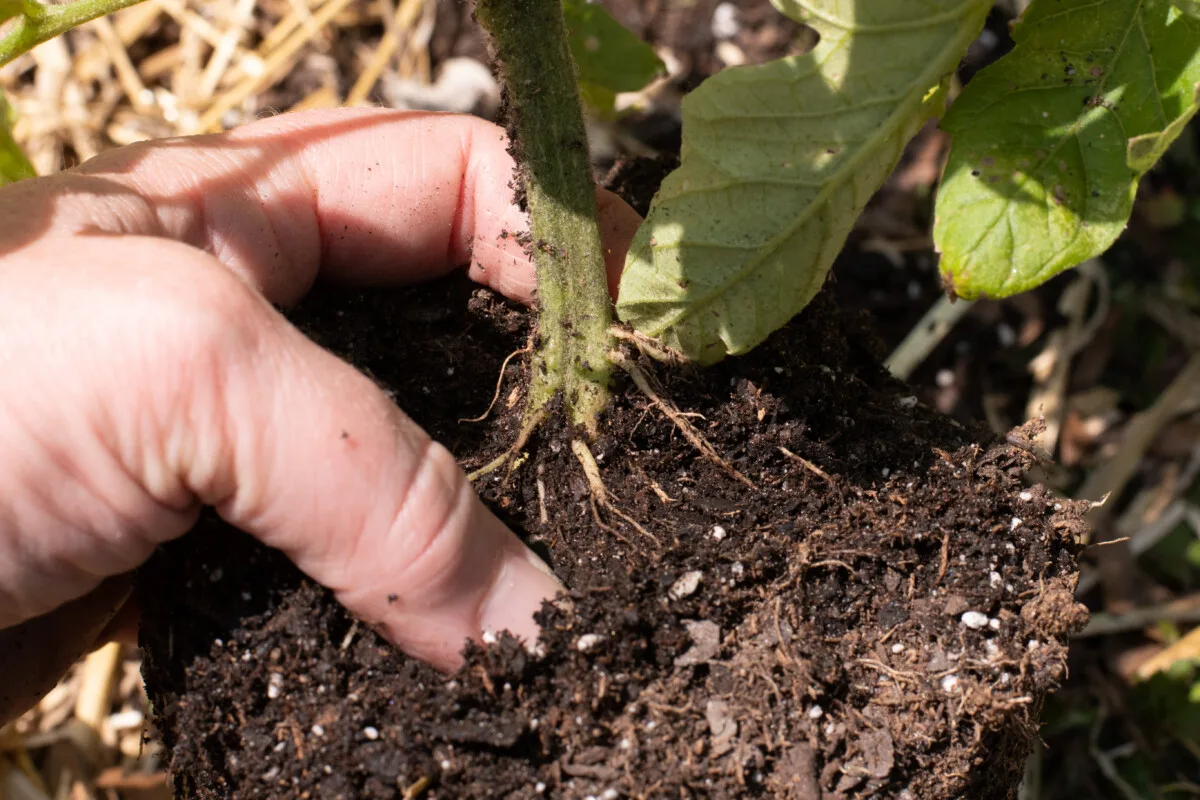
Sometimes, though, root primordia can be an indicator of a severely stressed tomato plant.
When to Worry About Adventitious Root Primordia
For the most part, these bumps will stay pretty rounded and green. When you start noticing them becoming more pronounced or worm-like or appearing in dense patches, you might have a stressed-out tomato plant on your hands.
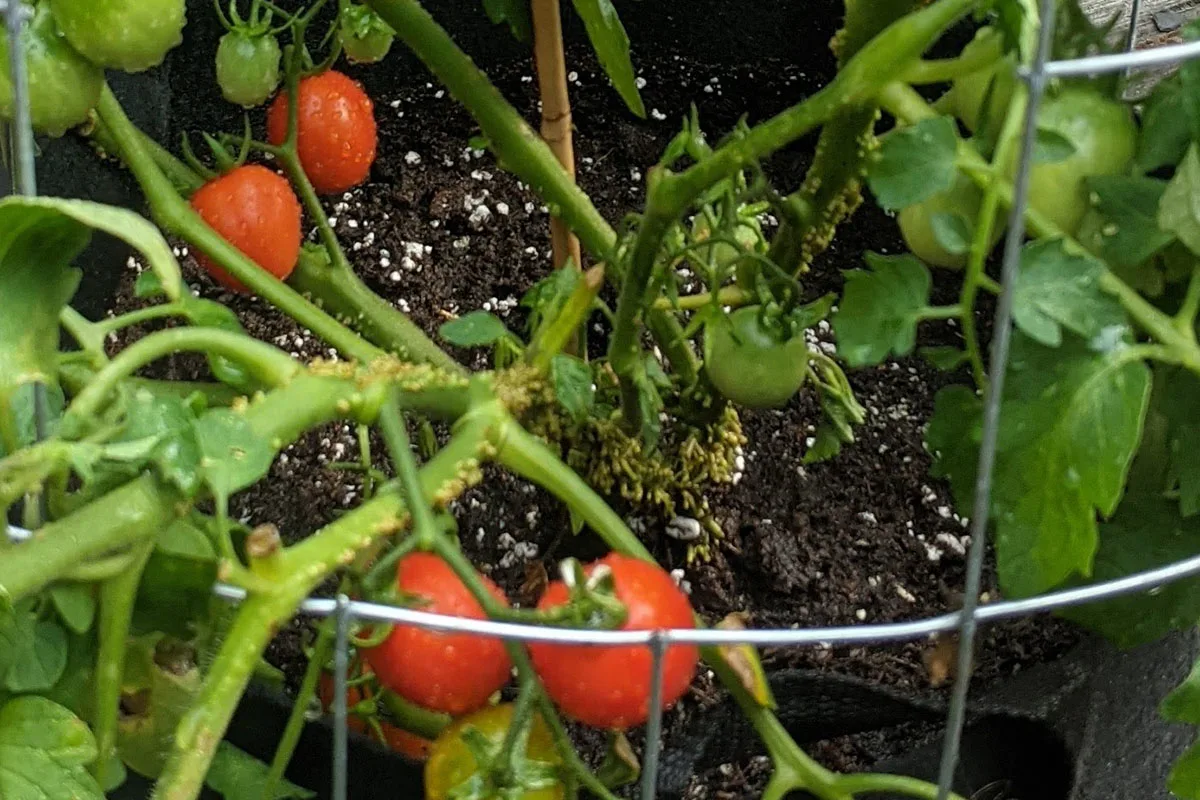
At some point, those parenchyma cells started getting serious about growing into adventitious roots. I briefly mentioned that a chemical within the plant, auxin, triggers adventitious root growth. There are certain environmental stresses that can cause the release of auxin; let’s take a look at a few of these.
Drought
Unsurprisingly, a plant’s response to drought would be to put out more roots. More roots = more avenues to take up water.
One of the best things you can do to drought-proof your tomatoes is to establish a deep and large root system when you plant your seedlings in the garden. This is why we suggest burying your tomato plants deeply. Start the roots deep, where the water is.
Another important consideration is mulch. Water is lost through evaporation wherever the soil is bare. Lock moisture in by mulching around your tomato plants.
Watering Frequently and Lightly
Giving your plant “sips” of water by watering often and lightly causes shallow roots to develop. The plant’s response is to make more roots because it’s not receiving enough water. Again, if you plant and water your tomatoes deeply, this won’t be an issue.
This is often a problem with container-grown tomatoes, where you’ll likely see plenty of root primordia growth.
Containers dry out much faster, meaning it’s more likely your plants will dry out. One of the best things you can do if you plan to grow tomatoes in a container is to choose a tall, deep one.
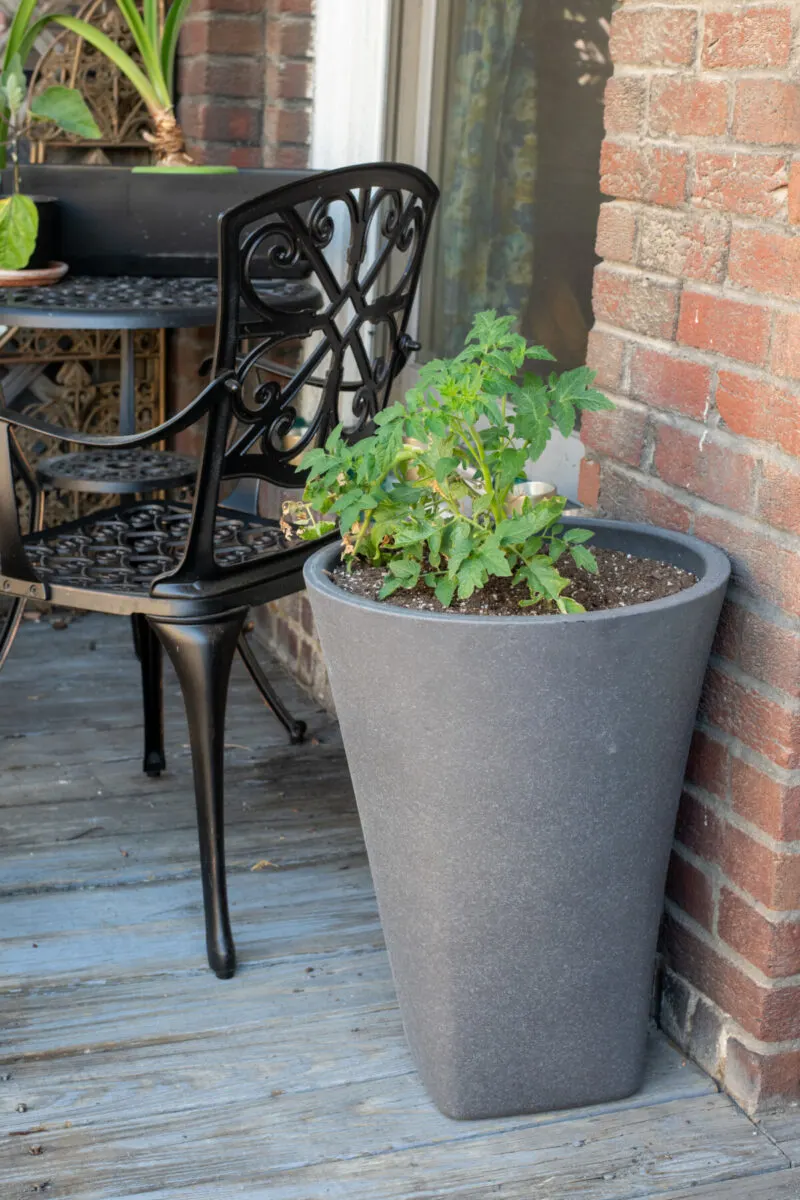
Growing large plants in small containers is one of the many container-growing mistakes I see all the time.
Waterlogged Roots
On the other end of that spectrum, waterlogged roots can also cause adventitious root growth along the stem. If roots underground stay waterlogged for too long, they may rot. The tomato plant will begin to replace the rotting roots with a new root system by putting out adventitious root primordia. Of course, this only works if those new roots can reach the soil.
Pay attention to overwatering (much harder to do than underwatering) with container-grown tomatoes.
Suppose you’re experiencing an especially rainy season, and you suspect your tomato’s root system is suffering. In that case, you can encourage the growth of a new root system by letting some of the lower stems contact the soil. This can help to replace rotted roots.
Compacted Roots
Compacted roots can lead to the appearance of root primordia as well. Again, this happens because the primary root system has become damaged in some way, so the plant will try to grow a new root system or bypass the damaged section.
You’ll rarely have major issues with compacted roots if you’re growing tomatoes in the ground.
But if you’re growing tomatoes in containers, choosing a container that’s too small can lead to severely compacted roots. Always choose a large container that can support a mature root system to prevent stressing your tomato out.
After all, we want our tomatoes to put their energy into growing fruit, not surprise roots.
Making Those Bumps Work for You
Now that you know what those freaky bumps are, it’s time to let you in on a little secret. You can use adventitious root primordia to grow robust, strong tomato plants that pump out tomato after tomato all season long.
It all starts with your seedlings.
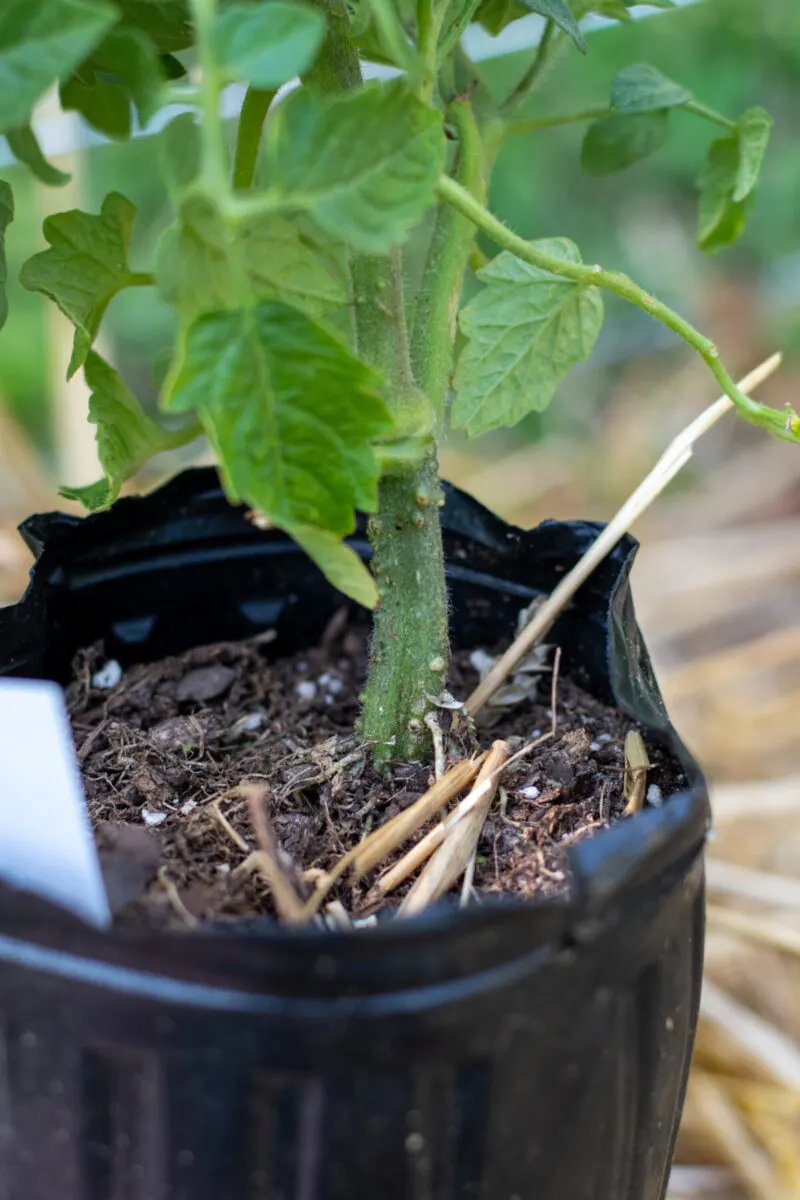
Since you know tomatoes can grow roots all along their stem; you can easily grow seedlings from seed with massive root systems before you ever put them in the ground. You just need to know my secret tomato potting-up method.
Then, when you do move your seedlings into the garden, encourage them to put out even more adventitious roots by burying your tomatoes deeply or sideways when you plant them.
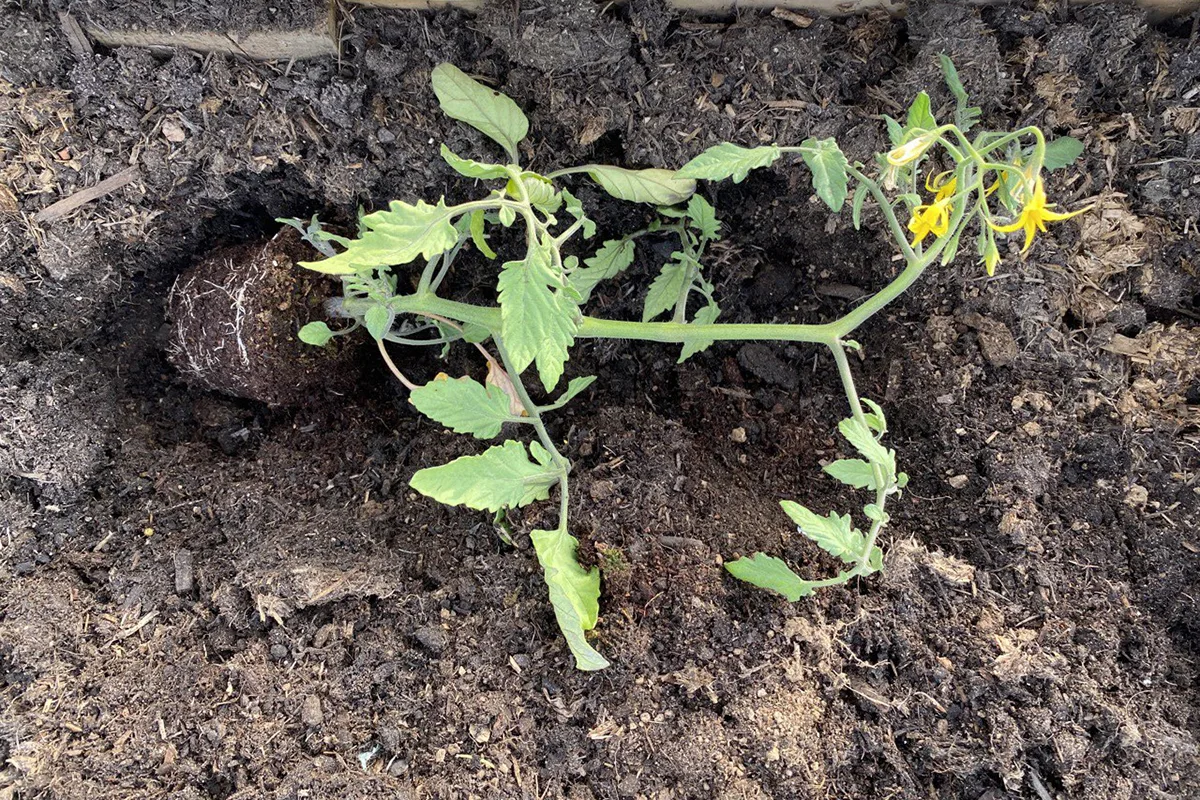
By employing both of these methods and a little mycorrhizae, you’ll have tomatoes with huge root systems, which, as any good gardener will tell you, is the key to healthy and high-yielding plants above ground.
Now aren’t you glad you asked what those weird bumps on your tomato stems are?

Get the famous Rural Sprout newsletter delivered to your inbox.
Including Sunday musings from our editor, Tracey, as well as “What’s Up Wednesday” our roundup of what’s in season and new article updates and alerts.

